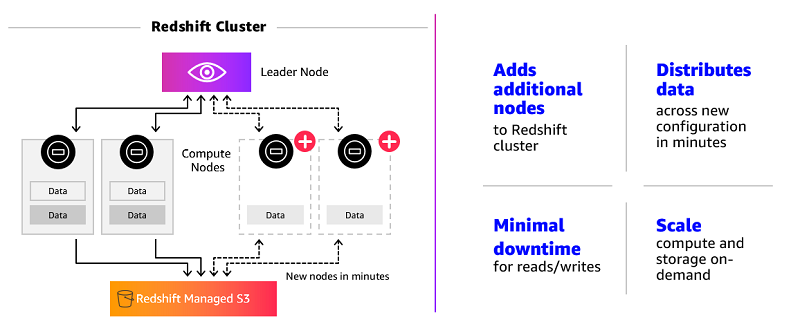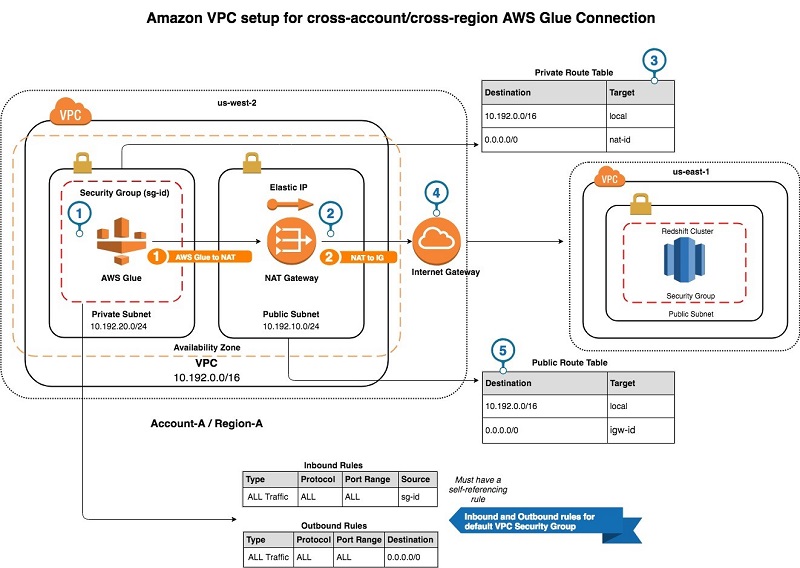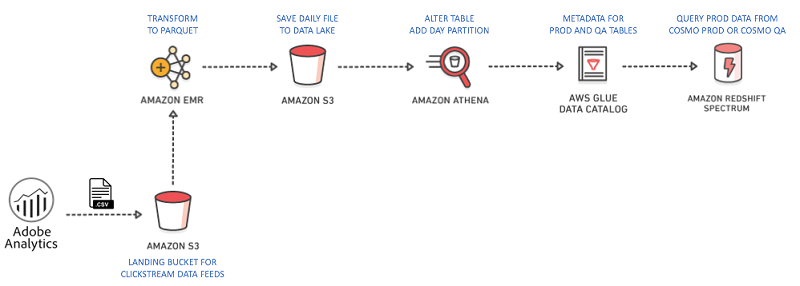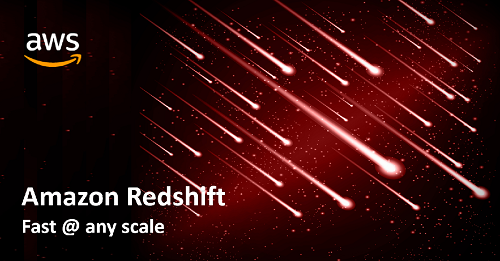AWS Big Data Blog
Tag: Amazon Redshift
Run Amazon payments analytics with 750 TB of data on Amazon Redshift
The Amazon Payments Data Engineering team is responsible for data ingestion, transformation, and storage of a growing dataset of more than 750 TB. The team makes these services available to more than 300 business customers around the globe. These customers include managers from the product, marketing, and programs domains; as well as data scientists, business analysts, […]
Scale your Amazon Redshift clusters up and down in minutes to get the performance you need, when you need it
Amazon Redshift is the cloud data warehouse of choice for organizations of all sizes—from fast-growing technology companies such as Turo and Yelp to Fortune 500 companies such as 21st Century Fox and Johnson & Johnson. With quickly expanding use cases, data sizes, and analyst populations, these customers have a critical need for scalable data warehouses. […]
Create cross-account and cross-region AWS Glue connections
In this blog post, we describe how to configure the networking routes and interfaces to give AWS Glue access to a data store in an AWS Region different from the one with your AWS Glue resources. In our example, we connect AWS Glue, located in Region A, to an Amazon Redshift data warehouse located in Region B.
Close the customer journey loop with Amazon Redshift at Equinox Fitness Clubs
Clickstream analysis tools handle their data well, and some even have impressive BI interfaces. However, analyzing clickstream data in isolation comes with many limitations. For example, a customer is interested in a product or service on your website. They go to your physical store to purchase it. The clickstream analyst asks, “What happened after they […]
Getting started: Training resources for Big Data on AWS
Whether you’ve just signed up for your first AWS account or you’ve been with us for some time, there’s always something new to learn as our services evolve to meet the ever-changing needs of our customers. To help ensure you’re set up for success as you build with AWS, we put together this quick reference guide for Big Data training and resources available here on the AWS site.
Create data science environments on AWS for health analysis using OHDSI
This blog post demonstrates how to combine some of the OHDSI projects (Atlas, Achilles, WebAPI, and the OMOP Common Data Model) with AWS technologies. By doing so, you can quickly and inexpensively implement a health data science and informatics environment.
Amazon Redshift – 2017 Recap
We have been busy adding new features and capabilities to Amazon Redshift, and we wanted to give you a glimpse of what we’ve been doing over the past year. In this article, we recap a few of our enhancements and provide a set of resources that you can use to learn more and get the most out of your Amazon Redshift implementation.
How I built a data warehouse using Amazon Redshift and AWS services in record time
Over the years, I have developed and created a number of data warehouses from scratch. Recently, I built a data warehouse for the iGaming industry single-handedly. To do it, I used the power and flexibility of Amazon Redshift and the wider AWS data management ecosystem. In this post, I explain how I was able to build a robust and scalable data warehouse without the large team of experts typically needed.
Top 8 Best Practices for High-Performance ETL Processing Using Amazon Redshift
When migrating from a legacy data warehouse to Amazon Redshift, it is tempting to adopt a lift-and-shift approach, but this can result in performance and scale issues long term. This post guides you through the following best practices for ensuring optimal, consistent runtimes for your ETL processes.
Combine Transactional and Analytical Data Using Amazon Aurora and Amazon Redshift
A few months ago, we published a blog post about capturing data changes in an Amazon Aurora database and sending it to Amazon Athena and Amazon QuickSight for fast analysis and visualization. In this post, I want to demonstrate how easy it can be to take the data in Aurora and combine it with data in Amazon Redshift using Amazon Redshift Spectrum.









